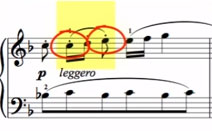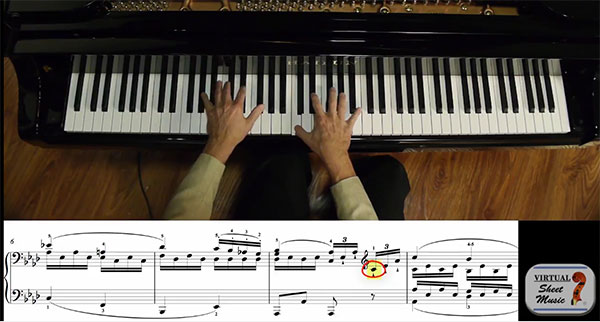Welcome back to our ongoing series on The Burgmuller Studies. Please reference our past articles if you are new to this series: Part 1: La Candeur, Part 2: L’Arabesque, Part 3 La Pastorale, and Part 4 “Ballade”. Today we are going to explore the piece “Innocence”.
The Burgmuller studies are great pieces for intermediate students since they help to improve fundamental skills and introduce complex techniques while offering musically rewarding composition.
We are going to go beyond the basics of mastering the fingering and learning the music. Today we will talk about how to add spice and character to your playing. Fortunately, most of the dynamics are written in the score. Accentuating the rise and the fall of the phrases will make this piece come alive!
Look at the first two measures and if you watch the video you will see how to highlight the rise and fall of the phrase:

Bringing life to your music is essential. Imagine you have a conversation with someone and you talk in a monotone voice. Your listener will become bored very quickly. While you don’t want to be overly animated in your speaking, having some life and character really engages people in what you have to say. The same thing is true for your piano playing.
The other thing you’ll want to be aware of in this piece is observing the rests exactly as written. They are very important in delineating the phrasing.
The second section of this piece offers a total change of character. In the left hand, you have simple repeated 8th notes. You can practice them in chords first to get good fingering and hand positions:

The right hand requires mastering the fingering and phrasing. It’s crucial to pay attention to the staccatos and slurs:

If you watch the video you will hear how to accentuate the phrasing with the use of the wrist. This is a little different from the approach to single staccato notes which requires a simple down and up the motion of the wrist. You’ll use the wrist to go down on the first note, then you have three notes in a row after it. On the third note, you come back up with the wrist! So, you use the wrist to go down and up for the 3 note group.

Down on the C
Up on the E
Learning to delineate phrasing with the wrist is a great technique for developing pianists to master and this particular piece is a great way to learn it.
One more thing to take note of in this section is the crescendo that starts in the second half after the repeat. Make sure you bring this out and feature it in your performance; it really brings excitement to the music.

When you get to the end of the piece you’ll encounter this descending scale:

This can easily be learned by practicing slowly at first and working up the speed with the metronome gradually until you have mastered it.
I hope this was helpful and if you have any questions about this topic or any other, please email me Robert@LivingPianos.com for more information.












